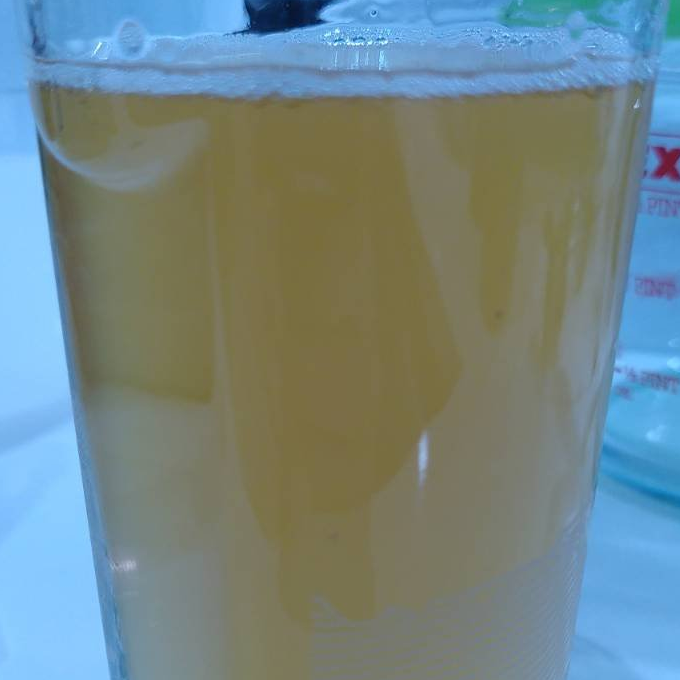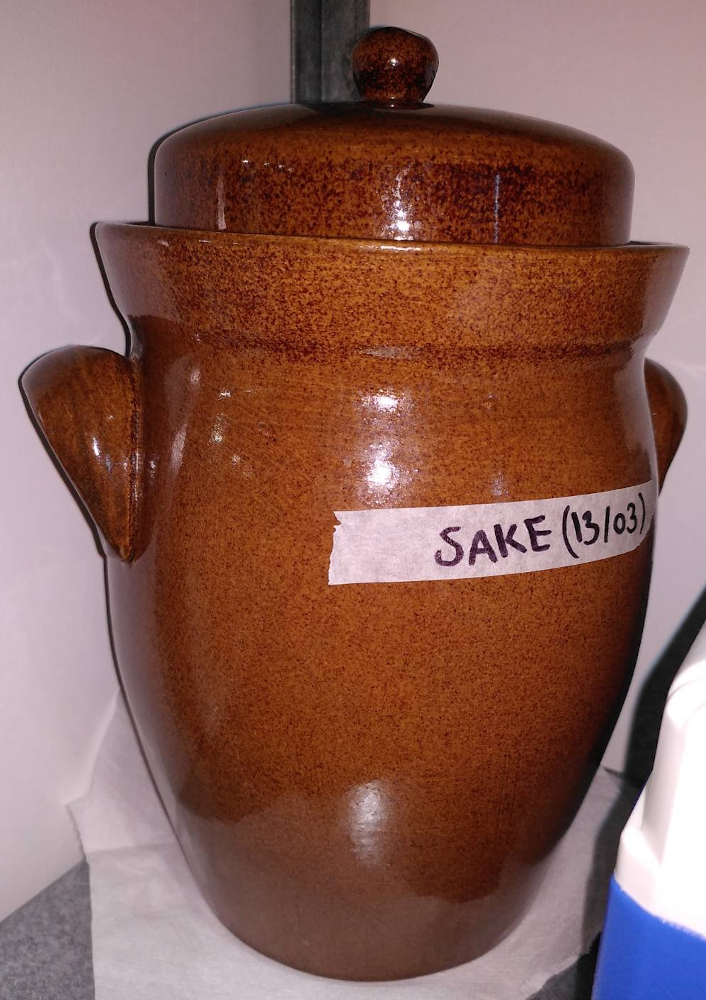First time making Weizen! And also first beer after moving to a new flat - that has induction hobs, which I never used for beer before.
And tbh, that was quite the fail, Partially because bad decisions and partially because of distractions… and surprisingly not because of the hobs.
Finding a recipe
Couldn’t find anything on my brewbooks about a straight up weizen - only recipes for berlinerweisse or weir weizen hybrids. From a reasonably quick search I found one that seemed convincing, and for good measure I checked with a friend that made one before. His recipe went in much more details about water treatment and various fine-tunings, but I’m aiming at something simple and effective for a trial run. We ended up concluding that the bill grain should look along the lines of:
- 50% pilsener malt
- 30% wheat malt
- 20% flaked wheat
Except that I didn’t have flaked wheat, so let’s go 50-50 pilsener and wheat.
Finding a pot
All of my brewing equipment has been rendered essentially useless by the transition to induction hobs. While this made me rather mad initially, and the search for a good pot that didn’t cost a fortune took a significant amount of time, I am quite happy with the new pot and strainer I got. Went for a 8.9l one. My batches are ~5l so that’s plenty of headroom.
Preparing for brewday
Day before, set some ice to prep, find everything in cupboards. I find my packets of WB-08 yeast and figure out that they expired several months before. A recent past of serial fails with pizza caused by dead yeast made me paranoid enough that I binned any package of yeast that had expired and canceled brewday. A waste, but I’m not fighting with dead yeast again.
I go online and order fresh yeast, along with the flaked wheat I was missing.
Preparing for brewday again
One week later, I received the new yeast and grains. Do the prep, confirm the recipe as:
- 270g wheat
- 450g pilsener
- 180g flaked wheat
- 4g spalt select @ 60m
- 1.5g irish moss @ 0m
- WB-08 3g
- 1.80l water mash
- 3.80l water sparge
- mash in 75, keep 66, flame out 78
Was supposed to use Hallertau but I know that I had Spalt Select instead so will roll with that. I can’t remember how I got to the numbers for water and temp - I think a combination of referencing similar recipes and finger-in-the-air. I actually don’t know how to do the maths for that.
Morning after, I take the big box of grains down from the shelf and start looking for the bag of pilsener malt. Surprise surprise: it’s not there, the only “base” grain I have in quantity is pale. WELL, we’re going so it will have to do. I also find that I already had a bag of flaked wheat, so I essentially bought the “wrong missing” grain. ggwp2me.
Cleanliness
Maybe obvious but good to always call it out: sanitise the shit out of everything before starting. I use StarSan for that, a full bowl to soak smaller items like the various airlock bits, plus some loaded in a little spray bottle for coverage of larger items.
After years of using StarSan I only now realised that yes, doesn’t need rinse but you’re supposed to leave it to air-dry completely. Whoops.
Execution on induction
The setup is a brew in a bag (BIAB) in the big pot on main hob, while a couple of other pots heat up the water on other hobs. My big water pot is also not induction-compatible so I have to make do with 2 smaller ones and the kettle, but that’s alright.
I have to say, the “boost” function of my induction hob is super handy to get water to high temp quickly. After mashing in the temp can be reduced to a 1.5 (out of 9 with half-points), and only occasinally move it to a 2 for a minute to keep the temp range around 66 (I think I went +-7 with a little neglect?).
Overall having a big pot that can hold all the mash + sparge water + grains at once, and a colander that slots on top of it is excellent for a small apartment setup. It’s very easy to lift the grain bag, insert colander on top of pot and do a single-round pour for the sparge. Def not the best technique but with limited space very efficient. In the past I used to recirculate 3 times across 2 pots of different sizes and not big enough and tbh that’s just messy for probably little benefit.
Nothing special to say about the boil - except that I ended up dumping 6g of Spalt select (flowers, not pellets) instead of 4 because it looked like too little. I couldn’t remember whether flowers are more or less effective than pellets so I improvised. Be smarter, don’t do the same.
For the cold break I used a single plastic bottle filled with ice. Filled the sink with cold water and put the pot in it to cool down, give both the water and the wort a little swirl in opposite directions to facilitate the temperature exchange. Change water and repeat a few times, once it reaches a range around 40C-ish add the ice too to get over those last few C that separate you from the 21-24C range. Without ice you can do it but takes ages, and using the ice too early would result in melting it immediately and still have the problem at the end. Ofc if you have abundant freezer space just make more ice (e.g. 4 cartons of orange juice are an excellent way of making rectangular blocks).
I measured an OG 1.050, filled the demijohn and pitched yeast.
Bottling
Fast forward 2 weeks, it’s time to bottle sake. In a moment of overwhelming laziness, I decide that I don’t want to clean bottles again for the beer a few days later and crack on with it despite the FG measurement being 1.010, too high.

Prime with ~2ml of 1:1 simple syrup per .5l bottle. The overall yeald was about 6x.5l bottles, 3l total.
The result
It’s indeed drinkable and vaguely alcoholic and after a couple weeks with the carbonation kicking in head retention is alright too. But it’s just not good! Can totally taste that the overall recipe would be alright and it’s indeed weizen-ish, but pale malt in this is plain horrid, and probably combined with the fact that it was bottled early the whole thing tastes more like malt juice than beer, with excessive hop bitterness to top.
Key takeaways:
- let’s do it again
- with pilsener malt
- with less hops
- do not be lazy on wating for the bottling
Aaaaand that’s it. A learning experience more than anything else.
 Foo
Foo

